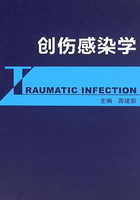
参考文献
1.Dai T,Kharkwal G B,Tanaka M,et al. Animal models of external traumatic wound infections. Virulence,2011,2(4):296-315.
2.Klein D G,Fritsch D E,Amin S G. Wound infection following trauma and burn injuries. Crit Care Nurs Clin North Am,1995,7(4):627-642.
3.Fink M P. Animal models of sepsis. Virulence,2014,5(1):143-153.
4.王卫,刘强,许琰,等. SHIV-KB9感染中国恒河猴动物模型的建立. 中国比较医学杂志,2011,21(2):1-6.
5.Chiavolini D,Pozzi G,Ricci S. Animal models of Streptococcus pneumoniae disease. Clin Microbiol Rev,2008,21(4):666-685.
6.Luna C M,Sibila O,Agusti C,et al. Animal models of ventilatorassociated pneumonia. European Respiratory Journal,2009,33(1):182-188.
7.Yáñez A,Martínez-Ramos A,Calixto T,et al. Animal model of Mycoplasma fermentans respiratory infection. BMC research notes,2013,6(1):9.
8.魏泓. 医学实验动物学. 成都:四川科技出版社,2001.
9.Awasthi S. Susceptibility of TLR4-defective C3H/HeJ mice to Coccidioides posadasii infection. Med Mycol,2010,48(3):470-475.
10.Pennini M E,Perkins D J,Salazar A M,et al. Complete dependence on IRAK4 kinase activity in TLR2,but not TLR4,signaling pathways underlies decreased cytokine production and increased susceptibility to Streptococcus pneumoniae infection in IRAK4 kinase-inactive mice. J Immunol,2013,190(1):307-316.
11.Takeuchi O,Hoshino K,Akira S. Cutting edge:TLR2-deficient and MyD88-deficient mice are highly susceptible to Staphylococcus aureus infection. J Immunol,2000,165 (10):5392-5396.
12.Dai T,Kharkwal G B,Tanaka M,et al. Animal models of external traumatic wound infections. Virulence,2011,2(4):296-315.
13.Calum H,Hφiby N,Moster C. Burn mouse model. Methods in Molecular Biology,2014,1149:793-802.
14.Wang N,Liu X,Zheng X,et al. Ulinastatin is a novel candidate drug for sepsis and secondary acute lung injury,evidence from an optimized CLP rat model. Int Immunopharmacol,2013,17(3):799-807.
15.Murray C K,Roop S A,Hospenthal D R,et al. Bacteriology of War Wounds at the Time of Injury. Military Medicine,2006,171(9):826-829.
16.Actor P,Grappel SF. Efficacy of ceftizoxime and related compounds in animals models of infection. J Antimicrob Chemother,1982,10:81-89.
17.Moesgaard F,Lykkegaard Nielsen MC,Justesen T. Experimental animal model of surgical wound infection applicable to antibiotic prophylaxis. Eur J Clin Microbiol,1983,2(5):459-462.
18.Worlock P,Slack R,Harvey L,Mawhinney R. The prevention of infection in open fractures.An experimental study of the effect of antibiotic therapy. J Bone Joint Surg Am,1988,70:1341-1347.
19.Lindsey BA,Clovis NB,Smith ES,Salihu S,Hubbard DF. An animal model for open femur fracture and osteomyelitis:Part I. J Orthop Res,2010,28:38-42.
20.Grewe SR,Stephens BO,Perlino C,Riggins RS. Influence of internal fixation on wound infections. J Trauma,1987,27:1051-1054.
21.Stieritz DD,Holder IA. Experimental studies of the pathogenesis of infections due to Pseudomonas aeruginosa:description of a burned mouse model. J Infect Dis,1975,131:688-691.
22.Katakura T,Yoshida T,Kobayashi M,Herndon DN,Suzuki F. Immunological control of methicillin-resistant Staphylococcus aureus (MRSA) infection in an immunodeficient murine model of thermal injuries. Clin Exp Immunol,2005,142:419-425.
23.Stevens EJ,Ryan CM,Friedberg JS,Barnhill RL, Yarmush ML,Tompkins RG. A quantitative model of invasive Pseudomonas infection in burn injury. J Burn Care Rehabil,1994,15(3):232-235.
24.Orenstein A,Klein D,Kopolovic J,Winkler E,Malik Z,Keller N,et al. The use of porphyrins for eradication of Staphylococcus aureus in burn wound infections. FEMS Immunol Med Microbiol,1997,19(4):307-314.
25.Hamblin MR,O’Donnell DA,Murthy N,Contag CH,Hasan T. Rapid control of wound infections by targeted photodynamic therapy monitored by in vivo bioluminescence imaging. Photochem Photobiol,2002,75(1):51-57.
26.Fries RB,Wallace WA,Roy S,Kuppusamy P,Bergdall V,Gordillo GM,et al. Dermal excisional wound healing in pigs following treatment with topically applied pure oxygen. Mutat Res,2005,579(1-2):172-181.
27.Wang N,Liu X,Zheng J,et al. Response to the Letter to the Editor entitled,“Optimization of the rodent model of polymicrobial sepsis” from Maddison Griffin,B. Biomed. Sci.,Hayley L. Letson,MSc,and Geoffrey P. Dobson,PhD. Int Immunopharmacol,2014,19(2):406-408.
28.Belmatoug N,Fantin B. Contribution of animal models of infection for the evaluation of the activity of antimicrobial agents. Int J Antimicrob Agents,1997,9(2):73-82.
29.Zak O,O’Reilly T. Animal models in the evaluation of antimicrobial agents. Antimicrob Agents Chemother,1991,35(8):1527-1531.
30.Barochia A,Solomon S,Cui X,et al. Eritoran tetrasodium (E5564) treatment for sepsis:review of preclinical and clinical studies. Expert Opin Drug Metab Toxicol,2011,7 (4):479-494.